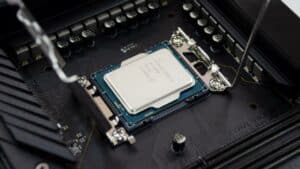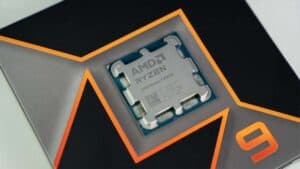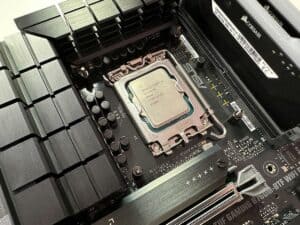Does Intel 14th gen need contact frame? Everything you need to know
Do you need a contact frame for your Intel 14th gen CPU? We find out

WePC is reader-supported. When you buy through links on our site, we may earn an affiliate commission. Prices subject to change. Learn more
Does Intel 14th gen need contact frame? You may have heard of stories of thermal issues with Intel 12th and 13th gen processors, leading to manufacturers creating a ‘contact frame’ to improve thermal performance and reduce any risk of CPU warping or similar issues. So today we’ll be getting to the bottom of what a contact frame is, what it does, and whether you need one for your Intel 14th gen CPU (once you’ve found out where to buy one).
If you want to learn more about the fresh 14th gen CPUs, it just so happens that we reviewed both the i9-14900K and i5-14600K processors – perfect if you want a technical evaluation.
If you’re in the mindset of safety first, a contact frame might be right up your alley, but do you really need one? Time to find out now that the Intel 14th gen release date has rolled by. There are quite a few details to talk you through, so no time to waste – let’s get to it!
Does an Intel 14th gen CPU need a contact frame?
First and foremost, a contact frame is not an essential piece of kit, it is rather an optional extra. These are created by brands such as Thermalright and Thermal Grizzly and not Intel themselves. This has been the case for both 12th gen and 13th gen processors, both of which fit into the LGA 1700 socket, which Intel 14th gen is using as well.
With the above in mind, we know that Intel 14th gen CPUs won’t require a contact frame as a must-have. Instead, it will be an optional investment if you want to try and amend any bending or thermal issues. Now that we can see that the Raptor Lake Refresh sticks to the same socket as last gen, older contact frames should work just as well with Intel 14th gen.
What does a CPU contact frame do?
Ever since the release of the LGA 1700 socket-based CPUs starting with Intel 12th gen, some reports have alluded to the elongated design of these CPUs being troublesome. That’s because the latch design of this socket could cause the processor to bend (or warp) over a long period of time. What a CPU contact frame actually does is distribute the pressure on the CPU more evenly to prevent bending, resulting in better heat dissipation, therefore slightly lower CPU temperatures.
Considering we like our hardware to last us a long time, this certainly sounded some alarms. The uneven pressure has been demonstrated in videos like this one, where we can see it doesn’t sit completely flush to the board. Despite the mild panic, Intel has assured consumers that this “does not cause the processor to run outside of specifications, and modifications like this may even void your warranty.
Intel 14th gen contact frame FAQs
Should I use a contact frame with Intel 14th gen?
It is not necessary to use a contact frame with your CPU, with Intel even warning that it could void product warranty. However, tests have shown that marginally lower temperatures can be achieved if you really wish.
Do 13th gen contact frames fit Intel 14th gen CPUs?
We now know that Intel 14th gen is using the same design and socket as the 12th and 13th gen processors (LGA 1700), which opens up the possibility of using compatible contact frames with the new 14th gen line-up.











